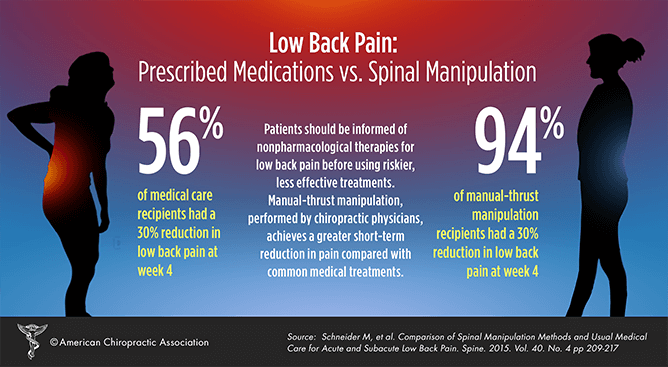Assistance Your Back Wellness By Understanding Exactly How Your Nutritional Selections Can Influence Your Discomfort Levels-- Find Out Which Foods To Choose For Relief And Which To Stay Clear Of
Assistance Your Back Wellness By Understanding Exactly How Your Nutritional Selections Can Influence Your Discomfort Levels-- Find Out Which Foods To Choose For Relief And Which To Stay Clear Of
Blog Article
Written By-Hsu Hardin
When it involves managing your back pain, the food choices you make can dramatically affect how you really feel daily. Visualize being able to reduce your discomfort simply by changing what you consume. By understanding the function of nourishment in pain in the back administration and understanding which foods to incorporate or steer clear of, you can take aggressive steps in the direction of a much healthier and much more comfortable way of life. The connection in between nutrition and back health and wellness is more extensive than you might recognize-- let's discover just how particular foods can either calm or worsen your back pain.
Significance of Nourishment in Back Pain
Nourishment plays a critical role in managing neck and back pain. Your diet plan can considerably affect inflammation levels and total pain levels in your back. Consuming a balanced diet abundant in nutrients like vitamins D and K, calcium, magnesium, and omega-3 fatty acids can help in reducing swelling and enhance bones, which are vital for back health.
Furthermore, maintaining a healthy and balanced weight through correct nutrition can reduce tension on your spinal column, lowering the danger of back pain.
In addition, particular nutrients like antioxidants discovered in vegetables and fruits can aid fight oxidative stress and anxiety and promote recovery in the body, including the back muscle mass and back.
On the other hand, consuming extreme quantities of processed foods, sugary drinks, and harmful fats can add to swelling and weight gain, aggravating neck and back pain.
Foods to Eat for Back Health
To support a healthy back, incorporating nutrient-rich foods into your everyday dishes is key. Including foods high in anti-oxidants like berries, spinach, and kale can help reduce swelling in your back, easing pain and discomfort. Omega-3 fatty acids discovered in fatty fish such as salmon and mackerel have anti-inflammatory properties that can profit your back health.
In addition, consuming nuts and seeds like almonds, walnuts, and chia seeds gives necessary nutrients like magnesium and vitamin E, which support muscle function and lower oxidative tension. Integrating lean proteins such as hen, turkey, and tofu can help in muscle mass repair and maintenance, promoting a strong back.
Don't forget to consist of dairy products or fortified plant-based alternatives for calcium to support bone wellness. Last but not least, moisturize with plenty of water to maintain your spine discs moisturized and operating efficiently. By consisting of please click the following page -dense foods in your diet, you can nourish your back and support general spinal wellness.
Foods to Prevent for Back Pain
Opt for avoiding processed foods high in sugarcoated and trans fats when seeking remedy for pain in the back. These sorts of foods can add to swelling in the body, which may worsen back pain. Say no to sweet snacks sweet, breads, and sugary beverages, in addition to convenience food items like burgers, french fries, and fried poultry that are often filled with trans fats.
Additionally, avoid foods having high degrees of polished carbs, such as white bread, pasta, and breads, as they can surge blood sugar level degrees and possibly intensify inflammation in the body.
It's also important to restrict your consumption of foods high in hydrogenated fats, like red meat and full-fat dairy items, as they can add to swelling. Processed foods like delicatessens meats, chips, and packaged treats are frequently high in hydrogenated fats and ought to be eaten in small amounts.
Final thought
To conclude, taking notice of your diet plan and making clever food selections can have a significant impact on managing pain in the back. By incorporating moksa hijama -rich foods like berries, fatty fish, nuts, and lean proteins, and staying clear of refined and sweet items, you can help reduce inflammation and support overall back wellness. Remember, what you consume plays an essential function in just how you feel, so make certain to prioritize your nutrition for a much healthier back.
